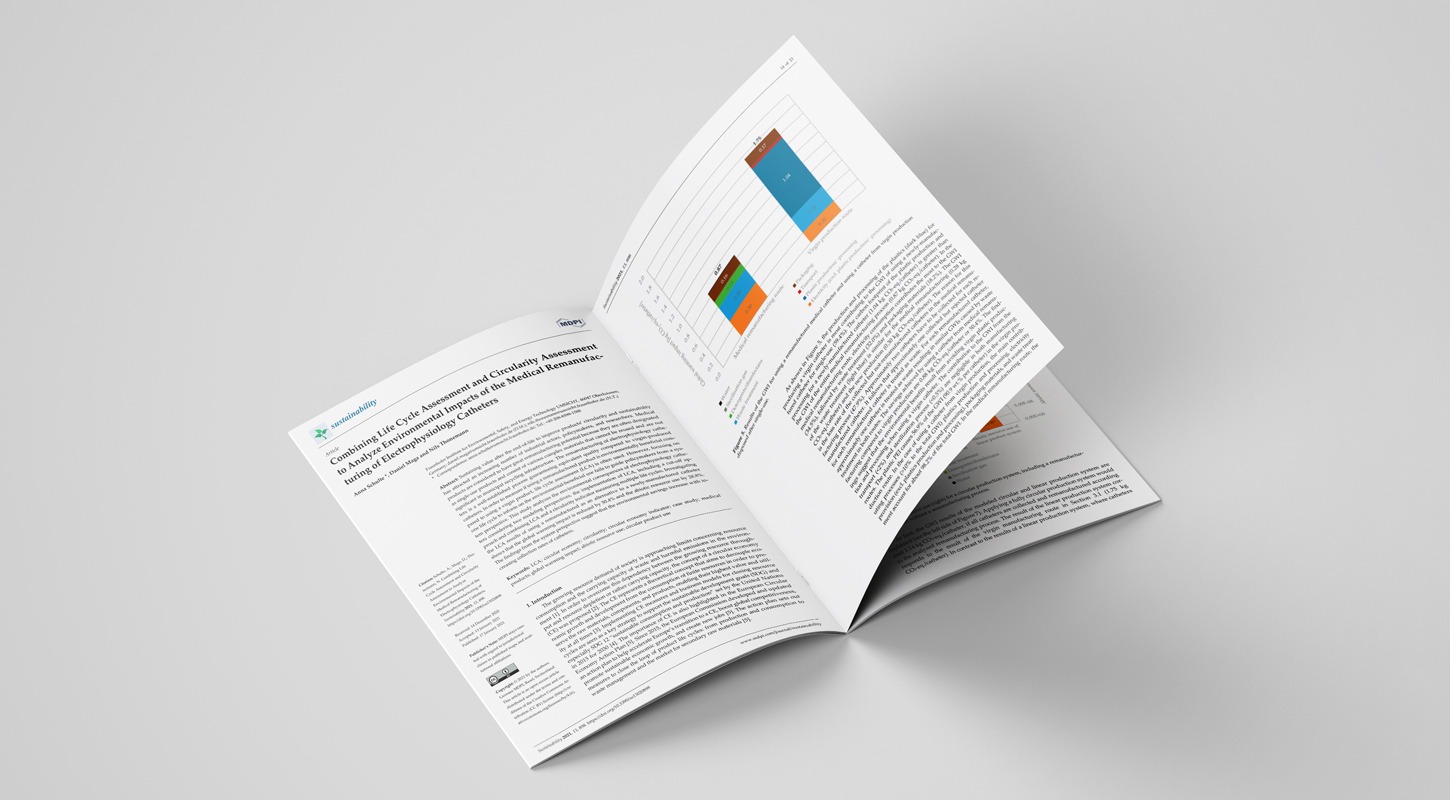Medical remanufacturing reduces the carbon footprint by over 50% and resource use by over 28%.
The positive Impact of medical remanufacturing on climate change is enormous, a new scientific study finds. The carbon footprint of a remanufactured medical device is less than half of that of the virgin device, the study concludes. Abiotic resource use is also substantially reduced (over 28%).
Those are the conclusions of a ground breaking study published today by Fraunhofer UMSICHT in Sustainability a scientific journal dedicated to sustainability and sustainable development. The study analyzes the environmental impact of electrophysiology catheters and concludes that using a remanufactured as an alternative to a virgin catheter reduces the global warming impact by 50.4% and the abiotic resource use by 28.8%. The study also concludes that the environmental savings increase with the number of remanufacturing cycles.
The study “Combining Life Cycle Assessment and Circularity Assessment to Analyze Environmental Impacts of the Medical Remanufacturing of Electrophysiology Catheters” by Anna Schulte, Daniel Maga, and Nils Thonemann, which was funded by Vanguard AG, was published in the journal Sustainability as part of the Special Issue Circular Economy and Sustainable Strategies and is available online:
PDF Version: https://www.mdpi.com/2071-1050/13/2/898/pdf
Abstract: https://www.mdpi.com/2071-1050/13/2/898




